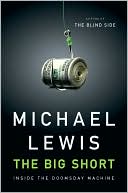Cultural Economics: Markets and Cultures
This book provides an always fascinating exploration of culture race, gender and identity in the marketplace, providing a structured conversation about some of the most difficult issues of the economic valuation of culture and indeed the very meaning of cultural subordination. We consider four central questions:\ Can economic behavior be understood without an attentive account of the cultural context in which economic transactions occur? We criticize the failure of neoclassical economics to...
Search in google:
This book provides an always fascinating exploration of culture race, gender and identity in the marketplace, providing a structured conversation about some of the most difficult issues of the economic valuation of culture and indeed the very meaning of cultural subordination. We consider four central questions:Can economic behavior be understood without an attentive account of the cultural context in which economic transactions occur? We criticize the failure of neoclassical economics to integrate explicitly the cultural variables of ordinary life into the models of economic measurement and the assumptions of economic reasoning. We argue that these thin models are devoid of the important differences of culture, language, and identity. We identify instead a more complex set of ideas that incorporate culture and its tension with commerce.What is the impact of racial dominance on the ownership and control of cultural property? Do the financial arrangements in the entertainment industry determine whether racial and cultural minorities will ever achieve self-sufficiency? We are fascinated by the artists whose labor as musicians, painters, singers, songwriters and actors enrich our daily lives. Yet, these cultural stars often live lives of economic desperation after their turn in the spotlight has ended. What is the effect of royalty payment systems is and of corporate structures that frequently under compensate, and even cheat these aging stars of the current revenue generated by the contributions they made in their youth?Lastly, attention is given to the dynamics of the market valuation of the human capital components of language, hairstyle, sexual difference, and culturallysignificant garb. Does control of these modes of expressive autonomy depress the wages and opportunities for advancement of workers who do not choose to assimilate with the dominant culture? More important, are cultural styles associated with subordinated groups so devalued by the majority that non-assimilationists must pay an economic penalty for their personal preference to seek harmony between their inner lives and their outer appearance.








